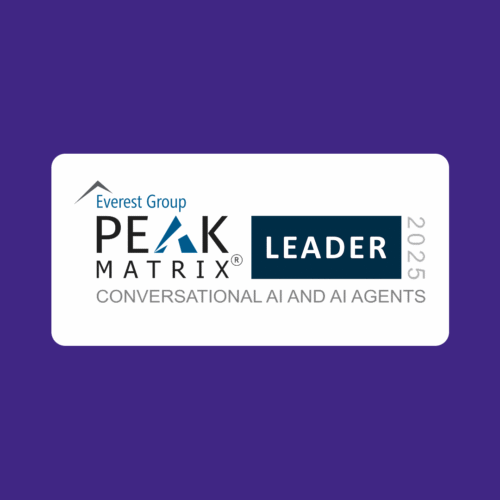In the last couple of years, the conversation around AI has been dominated by models. Bigger, faster, more parameters, more benchmarks, longer context. Enterprises are flooded with vendor pitches promising “ChatGPT for everything” or the magic of a 70B model.
But here’s the uncomfortable truth: enterprises don’t buy models. They are looking for trust.
Trust that the AI system won’t hallucinate when handling a customer complaint.
Trust that sensitive data won’t leak.
Trust that regulators won’t come knocking with compliance penalties.
Trust that the solution will still scale when it moves from a demo to tens of millions of customer interactions a month.
And trust doesn’t come from a research paper or a flashy demo. It comes from governance, execution, and responsibility.
The Hidden Cost of “Just the Model” Thinking
Most failed enterprise AI projects don’t fail because the model was weak. They fail because the foundations of trust and governance weren’t in place.
- Data governance was an afterthought → Sensitive customer data was ingested without proper anonymization, encryption, or access controls. Without strong governance at the start, even the most advanced model becomes a liability.
- Operational ownership was missing → Too often, AI pilots live in innovation labs without integration into the enterprise’s MLOps and DevOps pipelines. That separation leaves no clear ownership for monitoring drift, retraining, or compliance reporting — and when failures occur, it’s unclear whether data science, engineering, or risk should respond. True AI leadership means blending MLOps, DevOps, and governance into a single operating model so AI systems are maintained with the same discipline as any other mission-critical infrastructure.
- Ethics weren’t embedded → Bias and fairness checks were treated as “nice-to-have” rather than mission-critical. Instead of building in diverse training data, adversarial testing, or guardrails upfront, enterprises often test for bias only after rollout — when it’s too late. The result? Damaged customer trust, reputational risk, and costly remediation.
- Scalability wasn’t tested → What worked in the lab collapsed in the real world. A proof-of-concept chatbot that handled 10,000 conversations flawlessly suddenly buckled under the strain of 10 million. Without resilience testing — load, concurrency, failover, disaster recovery — scaling a model becomes a gamble.
The New Global Standard
Around the world, regulators are converging on the same message: accuracy alone is no longer enough.
- In Europe, the EU AI Act requires enterprises to document risk management, training data provenance, and explainability for high-risk AI systems.
- In the U.S., the AI Bill of Rights and sector-specific laws (like GLBA for financial services and HIPAA for healthcare) are setting new expectations for transparency, privacy, and accountability.
- In Asia, Singapore’s AI Governance Model and China’s new rules send the same signal: governance is inseparable from deployment.
The common thread is clear: enterprises will increasingly be judged not only on performance, but on how AI decisions are governed, documented, and explained.
That shift isn’t a technical detail. It’s an executive responsibility — one that belongs in the boardroom, not buried in the engineering backlog.
What AI Leadership Looks Like
Being an AI leader today doesn’t mean knowing the latest LLaMA release notes. It means something far more strategic:
- Building confidence with boards and regulators → not just saying “we’re compliant,” but demonstrating it with policies, audit trails, and governance frameworks that hold up under scrutiny. Real leadership means being able to answer the uncomfortable questions before they’re even asked.
- Embedding ethics in design → not bolting them on at the end. This means running bias audits, anonymizing data at the source, and stress-testing models against vulnerable use cases before they ever go live. Ethics is not a report; it’s a design principle.
- Delivering execution at scale → moving beyond flashy PoCs and building systems that handle 50M+ calls a month, thousands of concurrent sessions, and 99.99% uptime. The real measure of leadership isn’t a demo — it’s when the system is still performing reliably at 3 a.m. on a holiday weekend.
- Balancing innovation with risk management → pushing the frontier while protecting the enterprise. That means knowing when to deploy a cutting-edge LLM, and when a proven, deterministic approach is the safer choice. Leadership isn’t about hype adoption; it’s about strategic deployment.
- Translating AI into business outcomes → AI that doesn’t move KPIs like First Call Resolution, CSAT, or churn reduction is just a science experiment. True leadership connects the technical with the commercial.
- Creating trust across the organization → not just at the C-suite, but with employees, customers, and even regulators. When people trust the system, adoption accelerates. When they don’t, even the best model will sit unused.
This is why the best enterprise AI stories are not about a model. They’re about transformation with accountability, scale, and measurable results.
The Omilia Lens
We’ve seen this firsthand. When a top-five U.S. bank came to us, their first question wasn’t “Which model do you use?” It was:
- What concrete standards do you follow — GDPR, CCPA, PCI DSS, the EU AI Act — and how do you prove compliance in practice?
- Guide us through your data anonymization process: how exactly do you strip PII before it ever touches the model?
- How do you measure, report, and handle hallucinations — and what KPIs define “acceptance criteria” in production?
- What confidence scores do your models produce, and how are those tied to business KPIs (FCR, CSAT, compliance)? Can the system justify decisions in terms that a regulator will accept?
- Will the system sustain millions of monthly calls, thousands of concurrent sessions, and 99.99% uptime without introducing new failure points as it scales?
- Can it enhance customer trust, not erode it?
The model was the least of their worries. What they asked for was confidence.
And that’s why, at Omilia, we believe trust is the product. Models are only the means to that end.
Conclusion
The AI race isn’t about parameters anymore. It’s about principles.
And in the end, the enterprises that win won’t be the ones with the biggest models — but the ones their customers, regulators, and boards trust the most.Because in AI, trust isn’t just the foundation. It’s the product. And the leaders who understand that will own the next decade of AI.
About the Author
Marios Fakiolas, Chief Technology Officer
Former naval officer with a 13-year career. While in the Navy, he began freelancing as a full-stack engineer, building what became an 18-year journey in software. He led web development at Omilia, then took a GenAI-driven break to found HelloWorld as CEO/CTO, creating tools for Contact Centers like the Hello Intelligent Transcription Service. He returned to Omilia in April 2025 as Director of AI to lead all AI initiatives.


